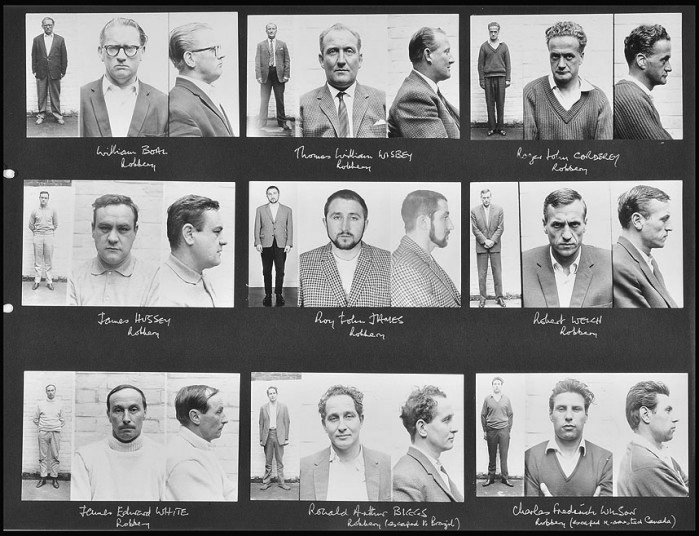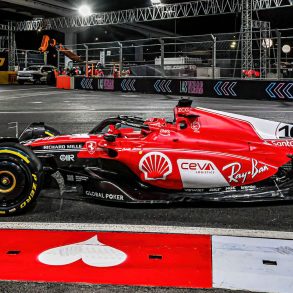Driven to Crime
by Robert W. Butsch

Roy James, by many accounts including Hailwood’s, showed great promise as a racing driver. He had begun in karts. At Brands Hatch in ’63 he was early into a 17 for 19 streak in Formula Junior. But he faced the same hurdle that most up-and-coming drivers not independently wealthy face: where will the money come from? The fact that racing demands significant capital investment can be attested to even by those who have never had to deal with Bernie Ecclestone. Niki Lauda got himself fearfully in debt before he hit the big time. Nigel Mansell once mortgaged his home to keep racing. James, apparently larcenous by nature or upbringing, seems to have decided at a tender age to obtain his funds by methods requiring neither interest payments nor restoration of principle.
By 1962, car theft and second-story work had already earned him periodic confinement as a guest of Her Majesty’s Government. In that year he and his mate, Micky Ball, like James short of stature and ethics and long on driving ability, made off with 144,000 pounds Sterling worth of someone else’s jewelry in Monte Carlo. Upon their return to England they fell in with a gang planning to knock over an armored truck payroll shipment at Heathrow in November. They were assigned the duty of getting the money and the thugs away from the scene of the crime in two stolen Jaguars. In accomplishing this James was able to display some of his motoring skills. While exiting through a gate in the airport’s perimeter fence he bounced off of an Austin A40 trying to block his way, but was able to keep going (here I shall stalwartly resist making any comparison with Jerez, 1997, except to observe that, although fraud was committed in Spain, at least nothing was stolen). Once on the main road he quickly overtook Ball, but, in a nervy move, balked traffic in the middle of an intersection whose light had just turned red allowing Ball and the money to get through. The robbery was a brutal affair, assorted clerks and armored truck guards having been coshed with homemade blackjacks, and netted the gang only 62,000 pounds. In the ensuing investigation Scotland Yard’s Flying Squad recognized James and Ball as the only usual suspects possessed of the sort of flair displayed in the getaway. Ball quickly caved in, in the process betraying a couple of the other perpetrators but not James. Only Ball wound up doing any time. James used part of his share of the loot to purchase the Brabham that got him going in Formula Junior.
Buoyed by the notoriety of, if not the financial return on, the airport job, the gang set its sights higher. They planned to hit a night train [What would later come to be called The Great Train Robbery] that allegedly carried millions of pounds in bank reserves from Glasgow to London. They brought in another London gang in order to obtain the services of one of its members, a florist accomplished at rigging railroad signals to stop trains. Ball, indisposed as a result of the Heathrow affair, was not in on this one, but Roy James was, in the process sinking his fledgling racing career while becoming a party to one of the most famous crimes ever committed.

The whole gambit was meticulously planned, and testament to the adage that if criminals would put half as much effort into legitimate work as they put into crime, they could be rich without the inconvenience of having to go to jail. The train was duly stopped by rigging the selected signal, which was located on an isolated stretch of track in Buckinghamshire. The fireman was abducted as he returned from the signal’s disabled call box. The cab was stormed and the driver bashed nearly to unconsciousness. James and another gang member decoupled the back end of the train on cue. The gangs’ driver was unable to get the locomotive moving, as was the train’s groggy driver, until enough vacuum developed, but this did not upset the schedule. The thieves smashed their way into the mail coach, then formed a bucket brigade to get the money bags moved from it to the army surplus truck. They were even disciplined enough to leave some money behind when their prearranged time limit had been reached. They convoyed back to the farmhouse as the sun was coming up. Roy James, in the most famous drive of his life, motored along with uncharacteristic sedateness at the wheel of a Land Rover. Bear in mind that this was August of 1963 and you realize that they got away with a staggering amount of money: 2.5 million pounds.
In complex undertakings people can make mistakes; and, as James could have attested to based on his motor racing experience, if they make mistakes where the risk factor is high the consequences can be severe. One of the robbers told the train crew to remain still for 30 minutes, clueing the police to the possibility that the gangs were hiding out near by. At the farm house some of the robbers occasionally forgot to wear their gloves, thereby leaving behind fingerprints. Others elected to paint the truck since it had been seen by one of the train’s crewman. Paint drops and splotches wound up in assorted places including on the bottoms of shoes. Mail bags from which money had been removed were disposed of haphazardly
The thieves, spooked by radio reports that the police were scouring the general area, made an early, disorganized exit from the farmhouse, ultimately abandoning the horse trailer plan. James retrieved his personal Jaguar, made high speed runs between London and the farm house carrying money, and spent an entire working day at his garage in order to avoid arousing anyone’s suspicion by an unexplained absence. He nevertheless found time to deliver 12,500 pounds of his own proceeds to Micky Ball’s home.

Roy James was probably the most intelligent of the train robbers, but it would seem that he took second place to no one in bad judgment. Once upon a time he shared the track on even terms with the likes of Brabham, Hulme and Stewart. What he might have accomplished in motor racing had he mapped the course of his life more carefully became only a “what if.”










